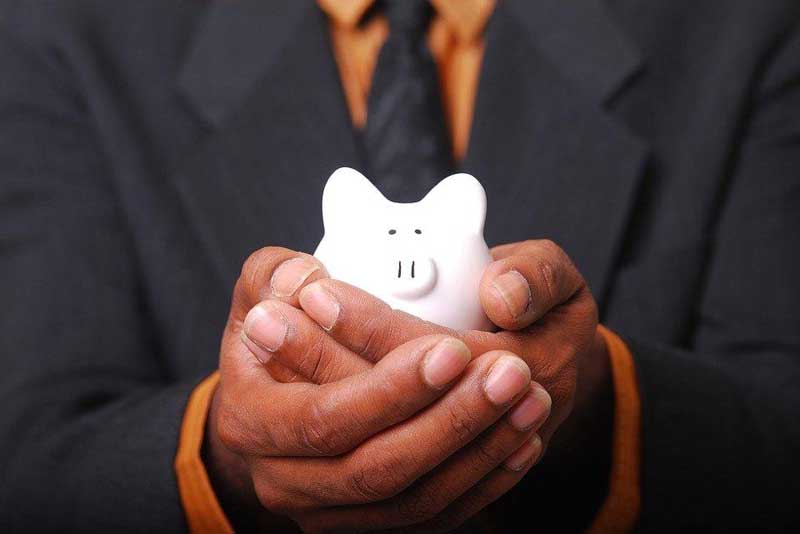7 Money-Saving Tips You Can Start Today
10 min read
In today’s world, it’s important to be smart with your money. While there are many ways to save money, it can be hard to know where to start and how to make the most of your budget. In this article, we’ll discuss 7 of the best money-saving tips that you can start using today so that you can start saving for a brighter future. Read on to find out which tips will work best for you!
Saving money can be difficult for the best of us – overwhelming rent payments, car bills, medical expenses, and day-to-day spending can mean you have no money left at the end of the month in which to save. Even the most financially acute person may find it difficult to get the money to stretch to all the different accounts and accumulate any kind of savings.
However, with careful budgeting, smart spending, and wise investments, you can make the most of your money and get the best value for your money. By understanding your financial position and setting achievable goals, you can build a budget plan that meets your needs and helps you reach your savings goals.

But when it comes to tips for saving money, small sacrifices can go a long way. The important thing to note here is that making a start is the first step to saving – even a little effort to start with can help you to build up your money. Once you start seeing the money in your bank account going up each month, it can give you a positive feeling that encourages you to accumulate more.
With that in mind, we’ve listed 7 great little tips that could make a big difference. If this isn’t enough for you though, here’s a list of 40 that will help you save money in just about every aspect of your daily life.
Remember, saving money is a journey and it may take some time to develop good habits. Be patient and consistent, and you will be on your way to building a strong financial foundation.
Here are a few tips that may help you save more money:
Table of Contents
1. Automate your savings

Automating your savings can be a helpful way to ensure that you are consistently setting aside money for your financial goals.
There are several ways you can automate your savings:
- Set up automatic transfers from your checking account to a savings account or investment account. You can choose to make these transfers weekly, biweekly, or monthly. This can help you save money without having to remember to transfer it manually.
- Use a budgeting app or tool that allows you to set up automatic savings goals. These goals can be based on your income, expenses, and other financial objectives.
- Use a retirement account, such as a 401(k) or IRA, to automatically set aside money for the future. Many employers offer 401(k) plans that allow you to contribute a certain percentage of your paycheck automatically.
- Consider using a high-yield savings account or a certificate of deposit (CD) that automatically renews when it matures. This can help you earn a higher interest rate on your savings and make it easier to grow your savings over time.
By automating your savings, you can make it easier to reach your financial goals and build a strong financial foundation for the future.
2. Cut down on your grocery budget

It is common for people to be surprised by how much they are spending on groceries each month, especially if they have not been tracking their spending closely. One way to get a better understanding of your grocery spending is to keep a record of everything you buy at the grocery store for a few weeks or even a month. This can help you identify any areas where you may be overspendings, such as impulse purchases or unnecessary items.
Once you have a better understanding of your spending habits, you can start to make changes to reduce your grocery budget. Some strategies you can try include making a list and sticking to it, shopping sales and using coupons, buying in bulk, shopping at discount stores, growing your own food, cooking at home, and buying store brands. You can also try outdoor cooking such as grilling, barbecuing and campfire cooking. By making small changes to your shopping habits, you can potentially save hundreds of dollars each year on your grocery bill.
There are several ways to cut down on your grocery budget:
- Make a list and stick to it: Before you go grocery shopping, make a list of the items you need and try to stick to it as closely as possible. This will help you avoid impulse purchases and save money.
- Shop sales and use coupons: Look for sales and use coupons whenever possible to save money on your purchases. You can also try using cashback apps or signing up for store loyalty programs to get additional discounts.
- Buy in bulk: Buying in bulk can often save you money, especially if you are able to take advantage of bulk discounts. Just be sure to only buy items that you will use before they expire.
- Shop at discount stores: Consider shopping at discount stores or warehouse clubs to save money on your groceries. These stores often have lower prices on a wide variety of items.
- Grow your own food: If you have a yard or access to a community garden, consider growing your own fruits, vegetables, and herbs. This can save you a lot of money on products in the long run.
- Cook at home: Cooking at home can save you a lot of money compared to eating out or ordering takeout. Plan your meals ahead of time and try to use ingredients that you already have on hand to minimize food waste.
- Buy store brands: Store-brand items are often just as good as national brands, and they can be significantly cheaper. Consider giving store brands a try to see if they meet your needs.
3. Cancel automatic subscriptions and memberships

Canceling automatic subscriptions and memberships can be a helpful way to reduce your monthly expenses and save money.
Here are some steps you can take to cancel automatic subscriptions and memberships:
- Make a list of all your subscriptions and memberships: Start by making a list of all the subscriptions and memberships you have. This can include things like streaming services, gym memberships, and magazine subscriptions.
- Review your list: Go through your list and decide which subscriptions and memberships you still use and value. If there are any that you no longer use or need, consider canceling them.
- Cancel the subscriptions and memberships you no longer need: Once you have identified the subscriptions and memberships you no longer need, it’s time to cancel them. You may be able to cancel online through the company’s website or app, or you may need to call customer service to cancel.
- Set a reminder to review your subscriptions and memberships regularly: To make sure you are not paying for any unnecessary subscriptions or memberships in the future, set a reminder to review your list on a regular basis. This can help you stay on top of your expenses and make sure you are only paying for the things you actually use and value.
- Consider switching to a cheaper option: If you find that you are paying a lot for a particular subscription or membership, consider switching to a cheaper option. For example, if you are paying for a premium streaming service, you may be able to save money by switching to a basic plan or using a free service.
4. Reduce energy costs

There are several ways to reduce energy costs in your home:
- Turn off lights and electronics when not in use: One of the easiest ways to save energy is to turn off lights and electronics when they are not being used. This can help to reduce the amount of electricity you use and lower your energy bills.
- Use energy-efficient appliances: Consider replacing your old, inefficient appliances with newer models that are Energy Star certified. These appliances use less energy and can save you a significant amount of money on your energy bills over time.
- Insulate your home: Proper insulation can help to keep your home warm in the winter and cool in the summer, which can reduce your energy costs. Consider adding insulation to your walls, attic, and crawl space to improve the energy efficiency of your home.
- Use energy-efficient light bulbs: Energy-efficient light bulbs, such as LED bulbs, use less energy than traditional incandescent bulbs and can last much longer. Replacing your old light bulbs with energy-efficient options can help to reduce your energy costs.
- Use a programmable thermostat: A programmable thermostat allows you to set different temperature settings for different times of day, so you can turn down the heat or air conditioning when you are not at home. This can help to reduce your energy costs.
- Seal air leaks: Air leaks in your home can allow hot or cold air to escape, which can increase your energy costs. Use weatherstripping and caulk to seal any air leaks around doors, windows, and other openings in your home to help improve energy efficiency.
5. Try a staycation

Vacationing in your own city can be a great way to save money while still having fun and exploring new places.
Here are a few ideas for things you can do:
- Visit local museums and attractions: Many cities have a variety of museums, art galleries, and other cultural attractions that you can visit for free or at a discounted rate.
- Go on a walking or biking tour: Many cities offer guided walking or biking tours that allow you to explore different neighborhoods and learn about their history and culture.
- Check out local festivals and events: Many cities host festivals and events throughout the year, such as music festivals, food festivals, and cultural festivals. These events are often free or have a low admission fee.
- “Go on a picnic: Pack lunch and head to a local park or beach for a picnic. This is a fun, budget-friendly option to spend a day outdoors..
- Have a movie night: Rent a movie or stream one online, pop some popcorn, and have a movie night at home. This can be a fun, low-cost activity for the whole family.
Overall, there are many ways to have fun and explore your city without breaking the bank. It’s just a matter of getting creative and finding activities that fit your interests and budget.
6. Use cashback apps and credit cards:

Cashback apps and credit cards can be a great way to save money on everyday purchases. Here’s how they work:
Cashback apps: These are apps that allow you to earn cashback or rewards on your purchases when you shop at certain stores or make purchases using a linked credit or debit card. For example, you might earn 1% cashback on all your purchases made using the app. Some cashback apps also offer special deals or discounts on certain products or services.
Credit cards: Many credit cards offer rewards or cashback for purchases made using the card. These rewards can take the form of points, miles, or cashback, which can be redeemed for various benefits such as statement credits, travel rewards, or gift cards. Some credit cards also offer sign-up bonuses, which can be a great way to earn extra rewards when you first open the account.
When using cashback apps or credit cards to save money, it’s important to be mindful of any fees or interest charges that may apply. For example, some credit cards have annual fees or charge interest on unpaid balances. It’s also important to pay off your credit card balance in full each month to avoid accruing interest charges.
Overall, cashback apps and credit cards can be a great way to save money on everyday purchases, as long as you use them responsibly.
7. Use public transportation or carpool:

Using public transportation or carpooling can be a great way to save money on commuting costs. Here are a few benefits of using these options:
- Cost savings: Public transportation and carpooling can both be more cost-effective than driving your own car, especially if you have a long commute. For example, a monthly subway pass may be cheaper than the cost of gas, maintenance, and other expenses associated with driving your own car.
- Environmental benefits: Public transportation and carpooling can also help reduce your carbon footprint, as these modes of transportation typically have a lower environmental impact than driving your own car.
- Stress relief: Commuting can be stressful, especially if you’re stuck in traffic or have to worry about finding a parking spot. Using public transportation or carpooling can help reduce some of this stress, as you can relax and let someone else do the driving.
If you’re interested in using public transportation or carpooling, here are a few things to consider:
- Check out your options: Research the different public transportation options available in your areas, such as buses, subways, or trains. You can also look into carpooling options, such as finding a carpool group or using a ride-sharing app.
- Consider the convenience: Think about whether the transportation options available in your area are convenient for your needs. For example, do they run at times that work for your schedule? Are they reliable?
- Factor in the cost: Compare the cost of different transportation options to determine which one is the most cost-effective for you. Keep in mind that the initial cost may not be the only factor to consider. For example, using public transportation may be cheaper upfront, but if you have to transfer to several different buses or trains, it may not be as convenient as carpooling or driving your own car.







